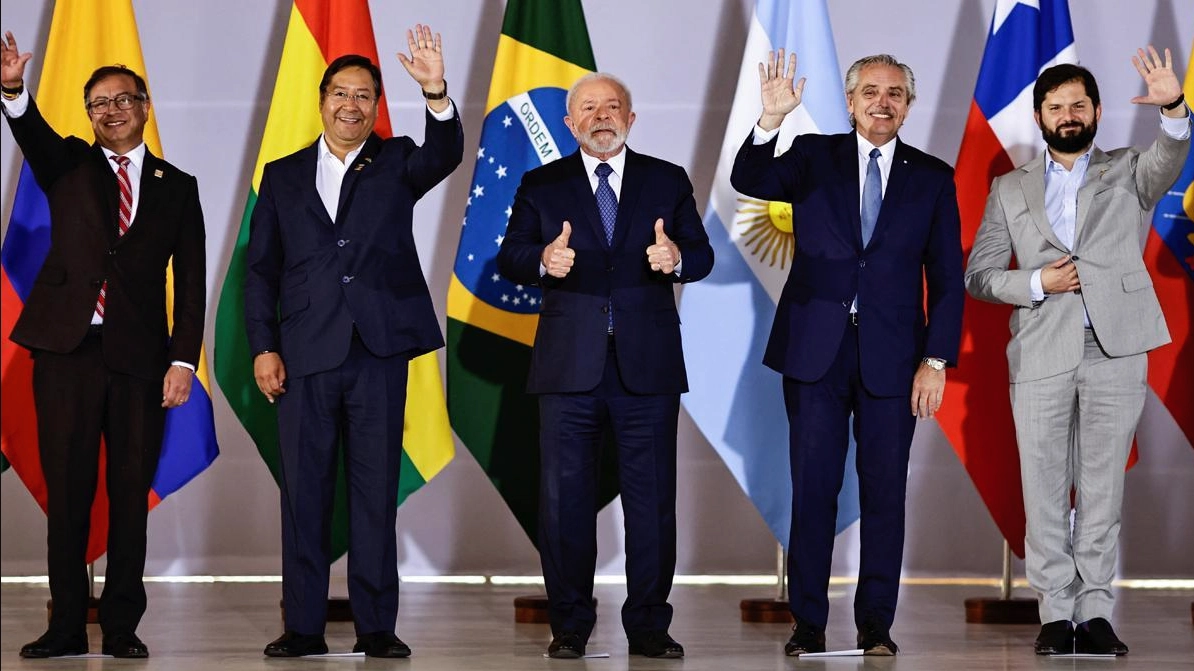With its anti-establishment outlines blurred, the notion is of little use.
The question in the headline comes to mind because academic authors and columnists in the media continue to use the label “left” as if this were the way to characterize a defined orientation. According to this widespread usage, in the case of today’s Latin America, the governments headed by López Obrador in Mexico, Gustavo Petro in Colombia, Lula da Silva in Brazil, Luis Arce in Bolivia and Gabriel Boric in Chile are placed as “leftist governments”. Peruvian Pedro Castillo and Argentinean Cristina Fernández de Kirchner were placed in the same pigeonhole at the time.
Reading the list raises some questions: what do these characters and their governments have in common to be placed under the same category? An anti-imperialist rhetoric? Perhaps a tendency to grant a central role to the state as the main economic actor instead of free enterprise and the free market? If, discourse aside, we examine the performance of those governments, we will quickly see that they do not all share these traits.
If we are rather, as it seems to be, faced with a diversity that is difficult to group, what explanatory capacity does the word “left” have to justify its use? In other words, what is the point of calling a government or a certain character “leftist”? And, then, what exactly is it to be a leftist today?
An appellation that has lost its significance
At the origin of the term left is the location of the revolutionaries in the seats of the first national assembly of France, who in August 1789 won the vote to limit the power of the king. Since then, forces opposed to the traditional order have been known as the left. Perhaps the ones that achieved the greatest historical repercussions were those that in 1917 put an end to tsarism in Russia. But on the road to the present, the experience with Stalin in the Soviet Union, with Pol Pot in Cambodia, with Kim Il-Sung in North Korea or, more closely, with the Castros in Cuba, with Ortega in Nicaragua or with Chávez-Maduro in Venezuela has pointed to something different.
The authoritarian line on “the left” had antecedents among the French revolutionaries. But it was Lenin who gave consistency to the tendency by incorporating the notion of “democratic centralism”, a sort of contradiction in terms that proved useful in crushing adversaries from within the ranks. Comrade Stalin, first, and Pol Pot more recently took the tendency to singularly bloody levels.
But even without reaching those terrible excesses, today well documented, “the left” built parties that, wearing all the garb and adopting all the symbols that could be considered “revolutionary”, revolved around an enlightened leader: Mao, the Kims and Fidel. Some succeeded in constituting lineages that, as in Korea, have perpetuated themselves by passing power from one generation to the next.
The different social constructions erected in the name of socialism came to reveal to us, over the years, the prisoners, and the dead, what could be done under left-wing banners. The “dictatorship of the proletariat” showed that it was a dictatorship and had little of the flesh and blood proletariat.
Can we continue to call “left” those degenerative constructions that have frozen in power certain cliques, just because they have maintained a language of revolutionary appearance while repressing their opponents?
In the end, those authoritarian regimes proclaimed themselves as “the really existing socialism”, to the discredit of the socialist tradition for which so many had sacrificed and even given their lives. The “leftist” ideology was thus turned into an instrument of combat to defend indefensible political regimes where, as George Orwell ironized 80 years ago in Animal Farm, while proclaiming equality, “some animals were more equal than others”.
The history of our political parties considered to be of the left reproduced that course. The successive internal divisions have corresponded more to struggles of ambitious leaders than to different definitions of lines of action and programmatic axes. Self-criticism was used again and again to accuse the other, not to review and correct one’s own mistakes. Expulsions of dissidents and “re-foundations” by splinter sectors continue to populate this history.
Back to the beginning
Perhaps it is time to ask ourselves where the non-conformism with the order — the old and the new — and the contesting capacity of the left have left off. And where is its proposal for a society truly different from the unjust order we were trying to leave behind.
Further proof of the loss of the left’s north is provided by various protest movements that are not currently wearing that T-shirt. Indeed, feminism, climate change activists, LGBTIQ movements and other mobilizations that demand profound changes in the existing order do not take refuge in the somewhat faded flags of the left. Many of their militants may vote for the left, but their struggles are not organically inscribed in the left because it has been stripped of meaning.
In this hopeless world for so many reasons, we need the illusion of a different reality to be built by our efforts, which allow us to escape from daily consumerism and the tedium of work to be able to pay for it. Will it be possible to build again collective subjects that assume a project respecting diversities and differences?
Will there be something to replace what the left could have been and what we have proven it is not? If there is, we could integrate into a vast common project the struggles that each one is now fighting in their own sector, like castaways on their own raft.
*Translated by Janaína Ruviaro da Silva from the original in Spanish.
Autor
Sociologist of law. He has studied the justice systems in Latin America, a subject on which he has published extensively. He has taught in Peru, Spain, Argentina and Mexico. He is a senior fellow of the Due Process of Law Foundation.











